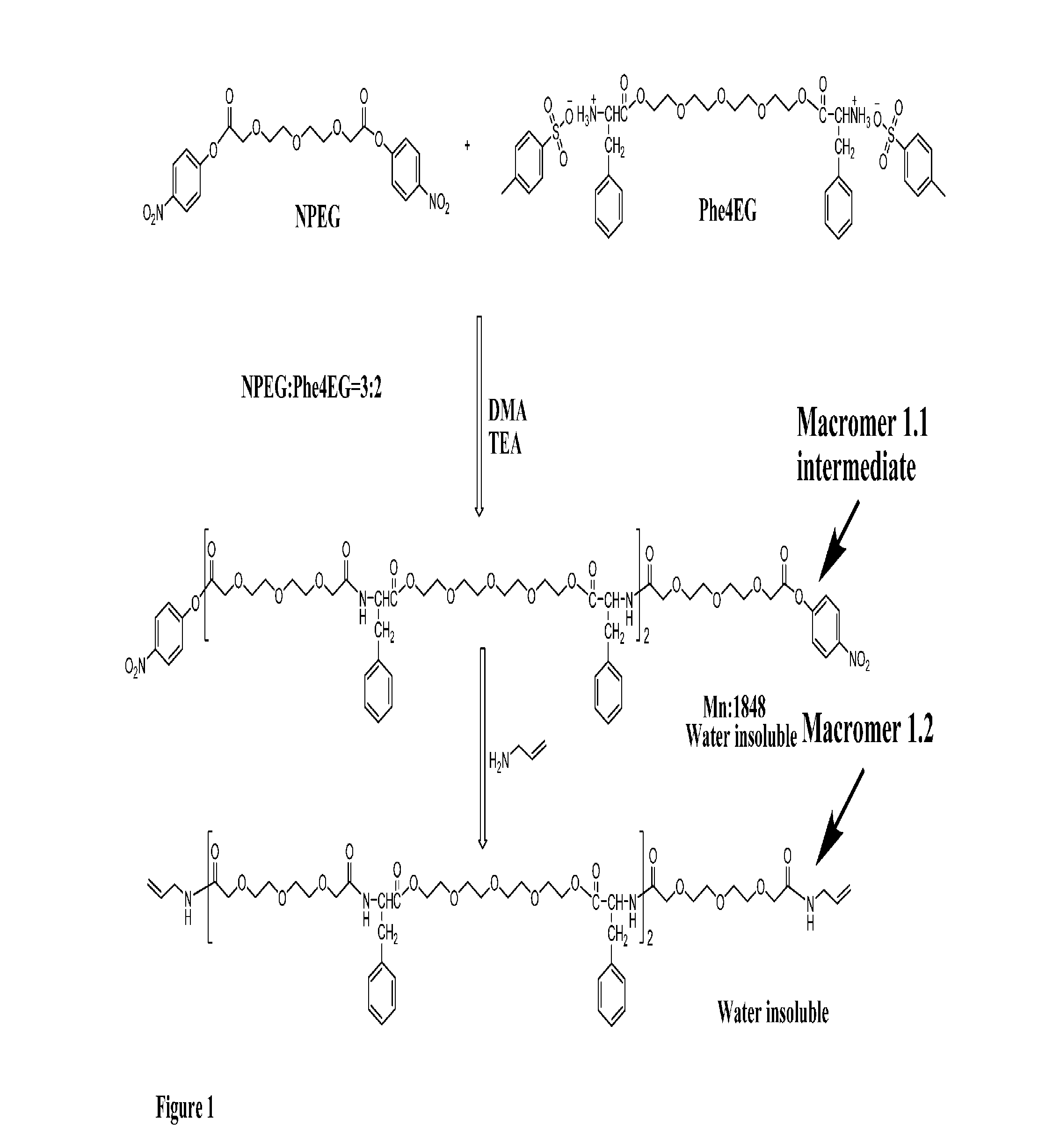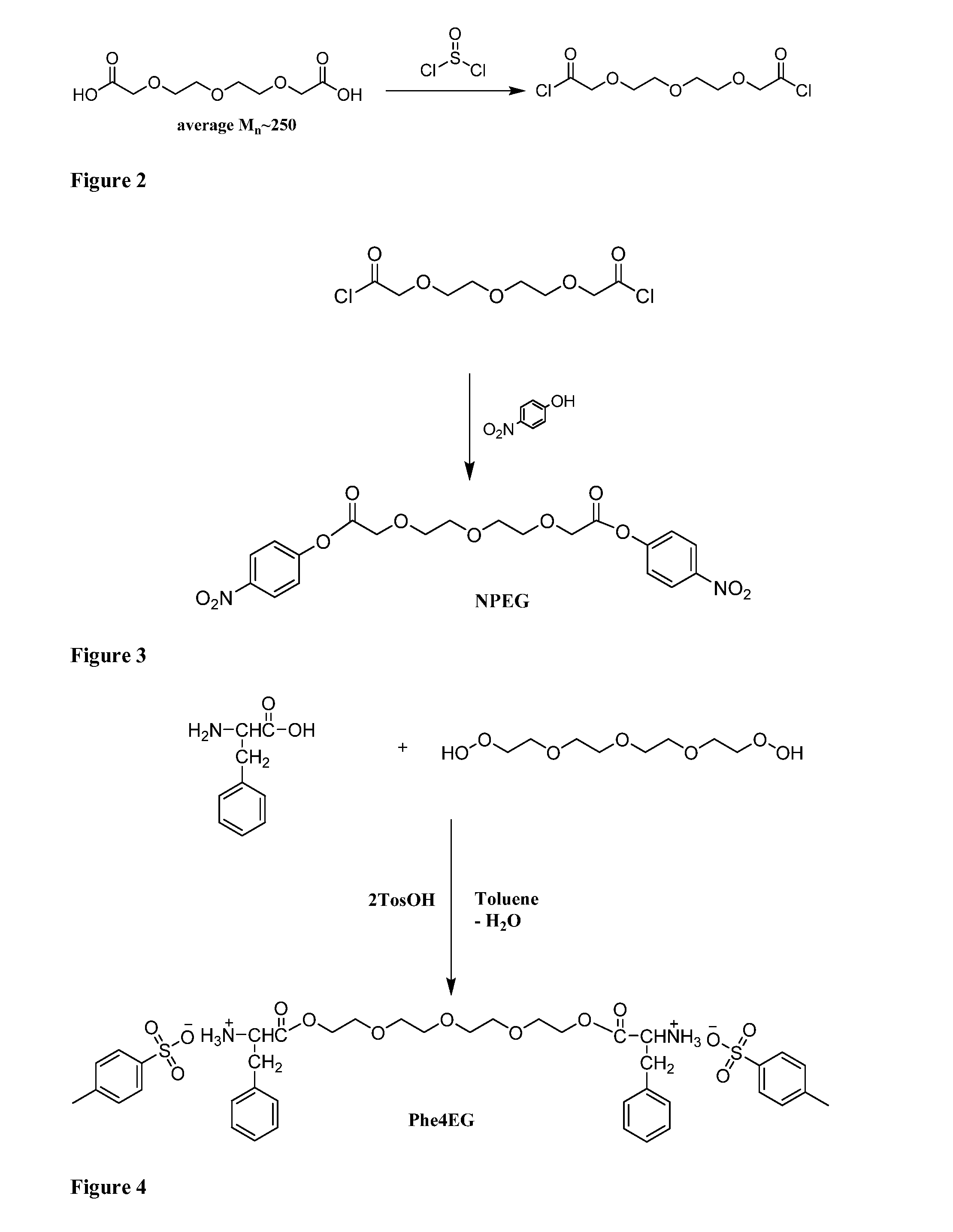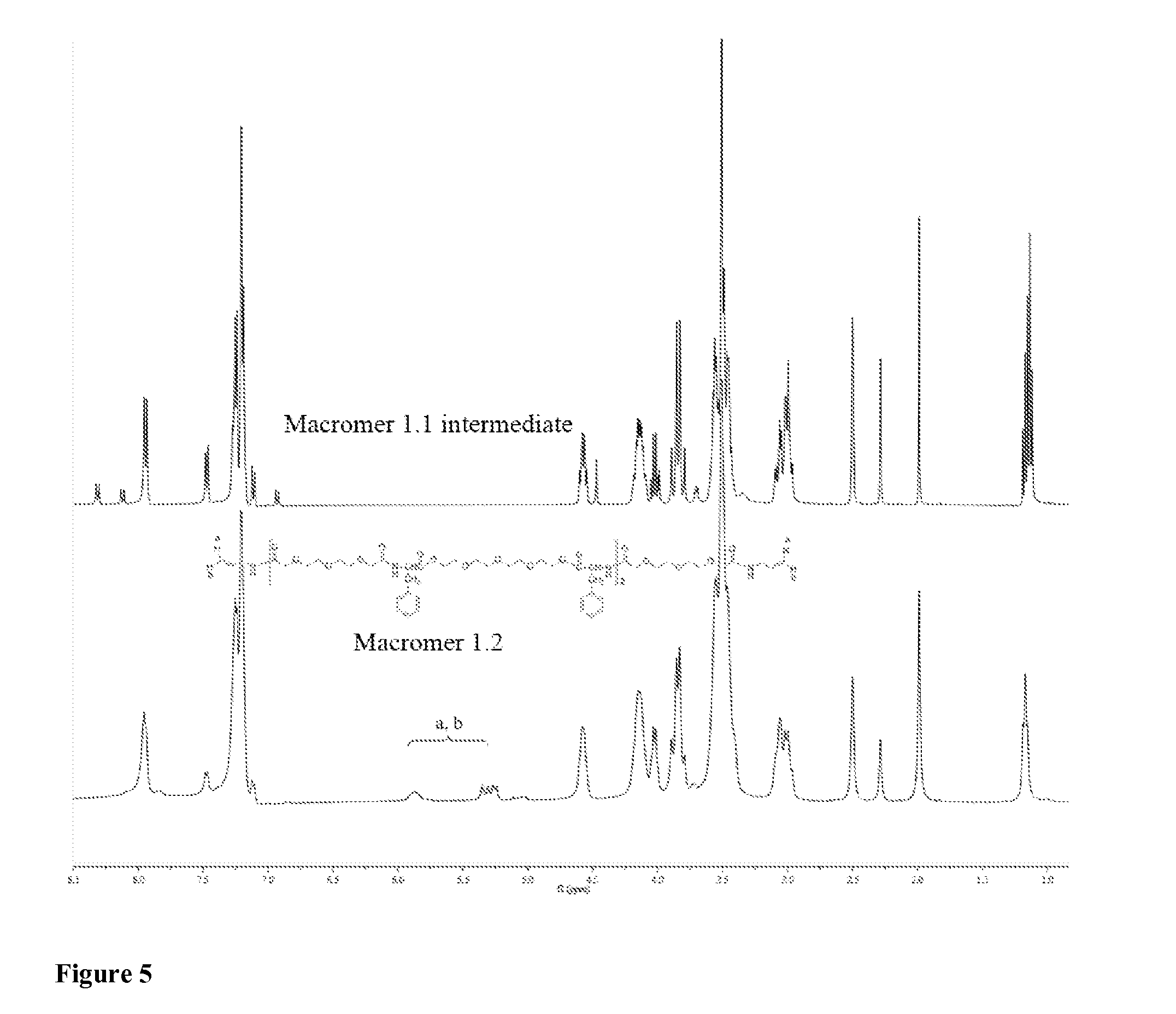Poly(Ester Amide) Macromers and Polymers Thereof
- Summary
- Abstract
- Description
- Claims
- Application Information
AI Technical Summary
Benefits of technology
Problems solved by technology
Method used
Image
Examples
example 1
[0091]Example of Preparation of Phe-EG based Functional Macromer
[0092]A Phe-EG based functional macromer is provided. A method for synthesizing a Phe-EG based functional macromer is also provided. FIG. 1 (Scheme 1) shows an embodiment of the method for synthesizing a Phe-EG based functional macromer in which Macromer 1.1 intermediate and Macromer 1.2 are synthesized from NPEG and Phe4EG. NPEG is one of the monomers used to polymerize PEA macromers and polymers. NPEG monomer is formed by the reaction of dicarboxylic acyl chlorides and p-nitrophenol.
[0093]Macromer 1.1, an intermediate product, was prepared by using the same synthesis route as for making poly(ester amide) (PEA). In comparison with PEA polymers, PEA macromers have the same chemical structure but lower molecular weight. Macromer 1.1 differs from NPEG monomer in that Macromer 1.1 has PEA structure but NPEG does not.
[0094]Steps of the Scheme 1 synthesis method are as follows. Synthesis of Polyglycol 250 Acid Dichloride (FI...
example 2
Example of Preparation of Phe-Based Functional Macromer
[0100]A Phe-based functional macromer is provided. A method for synthesizing a Phe-based macromer is also provided. FIG. 6 (Scheme 2) shows an embodiment of the method for synthesizing Phe-based macromer in which Macromer 2.1 intermediate, Macromer 2.2 and Macromer 2.3 are synthesized. These Phe-based macromers differ from the Phe-EG-based functional Macromers 1.1 and 1.2 (above, Section 5.1.) in the diol unit. Steps of the Scheme 2 synthesis method are as follows.
[0101]Synthesis of Di-p-toluenesulfonic Acid Salt of Bis-L-phenylalanine Butane-1,4-diester Monomer (Phe-4) (FIG. 7). L-Phenylalanine (42.95 g, 0.26 mol) and 1,4-butanediol (10.80 g, 0.12 mol) were directly condensed in refluxed toluene (500mL) with the presence of p-toluenesulfonic acid monohydrate (57.00 g, 0.30 mol). The heterogeneous solid-liquid reaction mixture was heated to 120° C. and reflux for 24 hours until 14.90 mL (0.83 mol) of water collected by Dean-Star...
example 3
Example of Preparation of Sulfonic Acid-terminated Unsaturated Functional PEA Macromer
[0109]A sulfonic acid-terminated unsaturated functional PEA macromer is provided. A method for synthesizing a sulfonic acid-terminated unsaturated functional PEA macromer is also provided. FIG. 14 (Scheme 4) shows an embodiment of the method for synthesizing Macromer 4.1 intermediate and Macromer 4.2 according to one embodiment of the method.
[0110]Synthesis of Di-p-nitrophenyl Fumarate Monomer (NF). FIG. 15 shows the synthesis of Di-p-nitrophenyl fumarate monomer (NF). A solution of triethylamine (6.09 g, 0.0603 mol) and p-nitrophenol (8.39 g, 0.0603 mol) in 100 mL of acetone was prepared at room temperature, and the solution was kept at −78° C. with dry ice and ethanol. Fumaryl chloride (3.2 mL, 0.03 mol) in 40 mL of acetone was added drop wisely into the chilled solution, and then with stirring at room temperature overnight. The resulting NF was precipitated in distilled water, dried in vacuum at...
PUM
| Property | Measurement | Unit |
|---|---|---|
| Structure | aaaaa | aaaaa |
Abstract
Description
Claims
Application Information
 Login to View More
Login to View More - R&D
- Intellectual Property
- Life Sciences
- Materials
- Tech Scout
- Unparalleled Data Quality
- Higher Quality Content
- 60% Fewer Hallucinations
Browse by: Latest US Patents, China's latest patents, Technical Efficacy Thesaurus, Application Domain, Technology Topic, Popular Technical Reports.
© 2025 PatSnap. All rights reserved.Legal|Privacy policy|Modern Slavery Act Transparency Statement|Sitemap|About US| Contact US: help@patsnap.com



